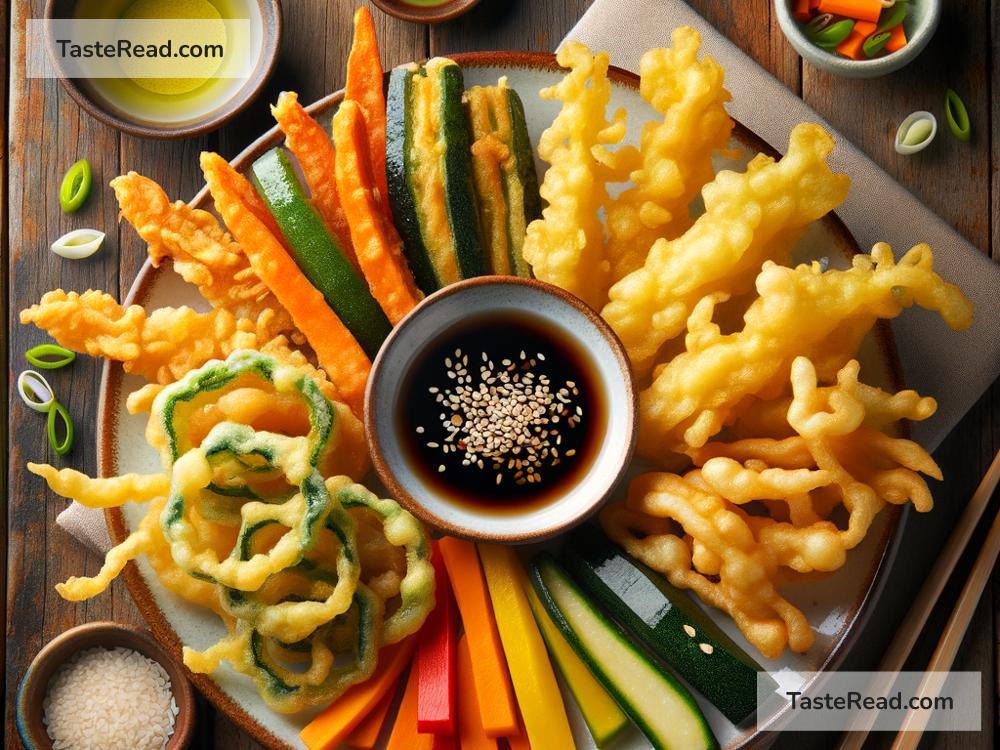How to Make Crispy Vegetable Tempura: A Simple Guide
Tempura is a delicious Japanese dish made by frying lightly battered seafood or vegetables until golden and crisp. One of the most popular versions is vegetable tempura, which combines fresh veggies with a light, crispy coating. The key to achieving that perfect crunch lies in the batter and frying technique. Don’t worry—it’s easier than you think! In this step-by-step guide, we’ll show you how to create crispy vegetable tempura at home in simple English.
Ingredients You’ll Need
For the batter:
– 1 cup (120g) all-purpose flour
– 1 cup (240ml) cold water (ice water works best)
– 1 egg (optional, for extra crispiness)
For the vegetables:
– Sweet potato (peeled and sliced thin)
– Zucchini (sliced into sticks or rounds)
– Bell peppers (cut into strips)
– Mushrooms (whole or halved)
– Carrots (sliced into thin sticks)
– Broccoli or cauliflower florets
– Any vegetable you like!
For frying:
– Vegetable oil (enough to fill a deep pan or skillet)
– A thermometer (optional but helpful)
Optional dips and garnishes:
– Soy sauce or tempura dipping sauce
– Grated daikon (Japanese radish) or sesame seeds for extra flavor
Step 1: Prep the Vegetables
Start by washing and cutting your vegetables into small, bite-sized pieces. Thin slices or stick-like shapes work best because they cook evenly and quickly. Try to keep the thickness consistent to avoid undercooked or soggy tempura.
Dry the veggies with a clean kitchen towel or paper towel to remove excess water. Wet vegetables can cause splattering and affect the crispiness of the batter.
Step 2: Make the Tempura Batter
In a mixing bowl, sift 1 cup of all-purpose flour to ensure the batter is smooth and lump-free. Add 1 cup of cold water and mix gently. If using an egg, crack it open and whisk lightly before adding to the batter.
The batter should have a light and slightly runny consistency—don’t overmix! A few lumps are okay because they help create that iconic crunchy texture.
Tip: Use ice-cold water to make the batter. Cold batter slows the cooking process slightly, giving you an airy and crisp coating.
Step 3: Heat the Oil
Pour a generous amount of vegetable oil (such as canola or sunflower oil) into a deep frying pan or pot. Heat the oil to about 350–375°F (175–190°C). If you don’t have a thermometer, you can test the heat by dropping a little batter into the oil. If it bubbles and floats, the oil is ready!
Step 4: Coat the Vegetables
Before frying, lightly toss the vegetables in a small amount of flour. This helps the batter stick better.
Dip each piece of vegetable into the batter one at a time, making sure it’s coated evenly. Do this gently so the batter doesn’t clump or drip off too much.
Step 5: Fry the Tempura
Carefully place the battered vegetables into the hot oil. Fry a few pieces at a time—don’t overcrowd the pan, or the temperature of the oil will drop and the tempura won’t be crispy.
Fry each piece until golden brown, which usually takes about 1–2 minutes per side. Use chopsticks or tongs to flip the pieces halfway through frying.
Once the tempura is crisp and golden, remove it from the oil and place it on a plate lined with paper towels to drain excess oil.
Step 6: Serve and Enjoy
Tempura tastes best when served fresh and hot. Arrange your crispy vegetable tempura on a platter and pair it with a dipping sauce like soy sauce or tempura sauce. If you want extra flavor, sprinkle sesame seeds or grated daikon radish over the top.
Tip: To keep everything warm while frying batches, place cooked tempura on a baking sheet in a low oven (around 200°F or 95°C).
Extra Tips for Perfect Tempura
-
Work Quickly: Tempura batter is best used immediately after mixing. If it sits for too long, it can lose its airy texture.
-
Cold Is Key: Keep the batter cold at all times. You can even place the bowl of batter over a larger bowl filled with ice if your kitchen is warm.
-
Size Matters: Cut vegetables into manageable pieces so they cook evenly without burning.
-
Don’t Overcrowd: Frying too many pieces at once can lower the oil temperature and make tempura soggy.
-
Use Fresh Oil: For the best flavor, use clean oil instead of reused or leftover frying oil.
Why Tempura Is Special
Tempura is so much more than fried food; it’s an art form. The light and crispy texture allows the natural flavors of the vegetables to shine through. Plus, it’s versatile—you can use whatever vegetables you have on hand. It’s perfect as an appetizer, side dish, or even part of a light meal with rice and miso soup.
Now that you know how to make crispy vegetable tempura, it’s time to try it at home! Gather your favorite vegetables, mix up a batch of batter, and start frying. With just a few simple ingredients, you can create a delicious dish that will impress your family and friends. Enjoy!


